Sam Monson & Steve Palazzolo don't agree on the best available running back in the 2024 NFL Draft with the guys each making a case for Michigan's Blake Corum and Texas' Jonathon Brooks.
Analysis
4/17/24
1 min read
Analysis
4/17/24
1 min read
Sam Monson & Steve Palazzolo don't agree on the best available running back in the 2024 NFL Draft with the guys each making a case for Michigan's Blake Corum and Texas' Jonathon Brooks.
Expert Analysis
4/17/24
10 min read
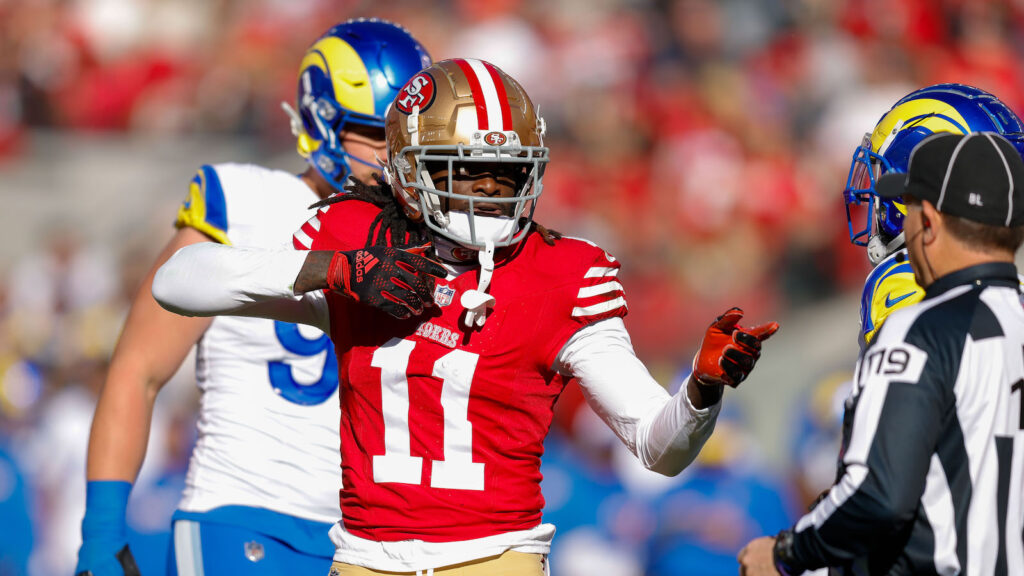
The NFL draft is always an active time to complete significant trades. They can involve swaps of draft picks for teams to move up or down or of veteran players moving for other players or draft picks.
Here are nine players who could be on the trade block and sent to new teams during next week’s 2024 NFL Draft. In most cases, it will take a strong offer to get teams to part with these players.
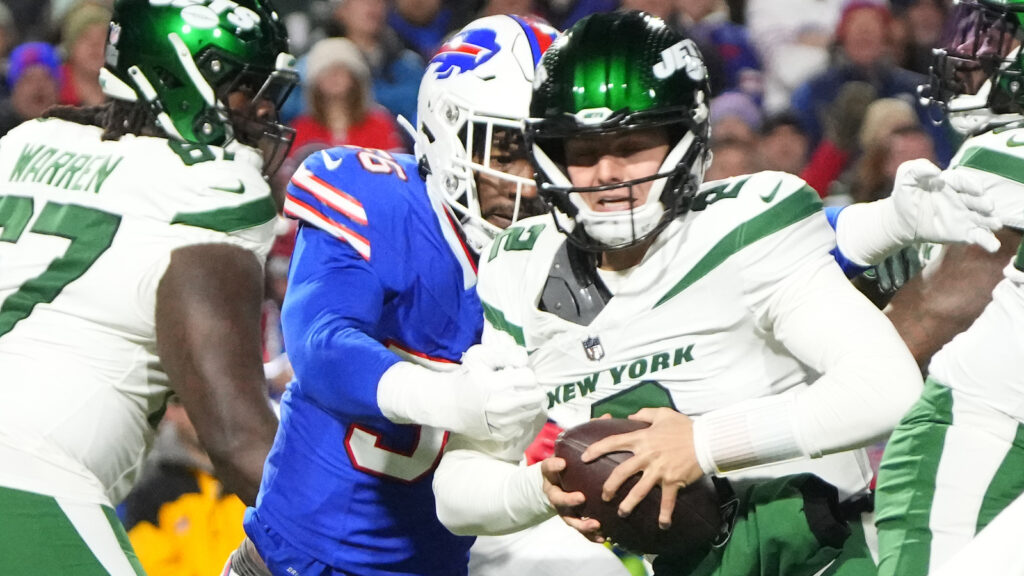
It’s time for the New York Jets to send their lightning-rod young quarterback packing. Perhaps the 24-year-old former second-overall pick will have a career renaissance with another team, but as of now, Zach Wilson stands as one of the all-time draft busts.
The difficulty in trading Wilson is his guaranteed $5.45 million salary for this year. But the Jets could pick up part of that and add a later-round draft pick to entice a new team like the Denver Broncos, where Sean Payton could try to make a quality quarterback — or at least a decent backup — out of Wilson.
Or perhaps the San Francisco 49ers would be open to a trade, with Kyle Shanahan trying to coach Wilson up as a potential No. 2 quarterback.
Jets general manager Joe Douglas said the team permitted Wilson to seek a trade. With only $1.9 million of cap room, New York will take any relief it can get from Wilson’s contract. After signing Tyrod Taylor to back up Aaron Rodgers, there’s no future for Wilson with the Jets, who will not exercise the fifth-year option on a quarterback with maturity questions and a career record of 12-21. Wilson also has more career interceptions (25) than touchdowns (23), along with a dismal 73.2 passer rating.
Get whatever you can, and let Wilson move on.
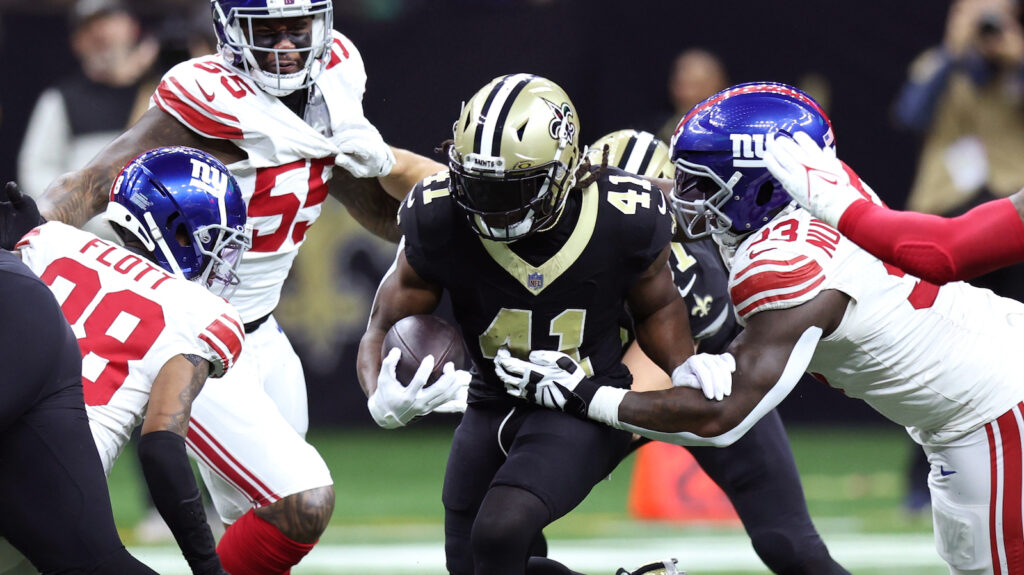
The New Orleans Saints paid Alvin Kamara a $1 million roster bonus on March 13 to keep him. But that doesn’t preclude the Saints from trading their soon-to-be 29-year-old running back if they can find a team willing to take on a big salary for an often-injured player.
Kamara was New Orleans’ third-round pick in 2017. When healthy, Kamara is a dynamic, five-time Pro Bowl player who is a dual-purpose threat. He missed four games last season and 10 games in the past three seasons. He had the worst season of his seven-year career in 2023, with 694 rushing yards, 466 receiving yards and six touchdowns.
Kamara is entering the fourth year of a five-year, $75 million extension signed in 2020. He is scheduled to earn $11.8 million this year, and the Saints can gain only $339,000 in cap savings by trading him. More importantly, cap-strapped New Orleans can gain $19 million in 2025 if he is off the roster.
The Saints likely will have to pick up part of his salary to entice another team, but that would be the best course for them. New Orleans could draft a younger running back to pair with Jamaal Williams or could give last year’s third-rounder, Kendre Miller, a bigger role.
There have been rumblings that Brandon Aiyuk or the San Francisco 49ers’ other starting wide receiver, Deebo Samuel, could be traded. If Samuel is traded, it would cost them more than $14 million in additional cap space due to a huge dead money, so that doesn’t make sense.
That brings us to Aiyuk, who is having difficulty getting an extension done and could be forced to play under the fifth-year option at $14.124 million.
Aiyuk, 26, was the 49ers’ first-round pick in 2020. He is coming off his best season, with 75 catches for 1,342 yards and seven touchdowns, his second straight 1,000-yard receiving season.
San Francisco has only $7 million of cap room and will need more cap space to sign its draft picks and when all players count against the cap after the final cut in September (instead of only the top 51 counting now). This is a strong draft for wide receivers, so the 49ers should trade Aiyuk if they get a solid offer and then draft a much cheaper receiver.
The Cincinnati Bengals say Tee Higgins is not a trade candidate after he was hit with the $21.816 million franchise tag. But he’ll be on the move if the team gets an offer it can’t refuse.
Higgins, 25, is an excellent receiver and a big target for Joe Burrow. The Bengals’ 2020 second-round pick had 100-plus receptions in his first three years before missing five games last season due to rib and hamstring injuries. He dropped to 42 receptions for 656 yards and five touchdowns.
Higgins and Ja’Marr Chase form one of the league’s top-receiving duos, and Chase is eligible for an extension that should be worth $30 million-plus per year.
Chase will be the priority, and it’s doubtful Higgins will stay with the team once Chase’s extension hits the books in the next couple of years, especially as Burrow’s contract also gets pricey in the coming seasons.
Higgins is a potential free agent in 2025, so the Bengals would be wise to trade him during this year's draft for a first-round pick and then draft a starting receiver to pair with Chase.
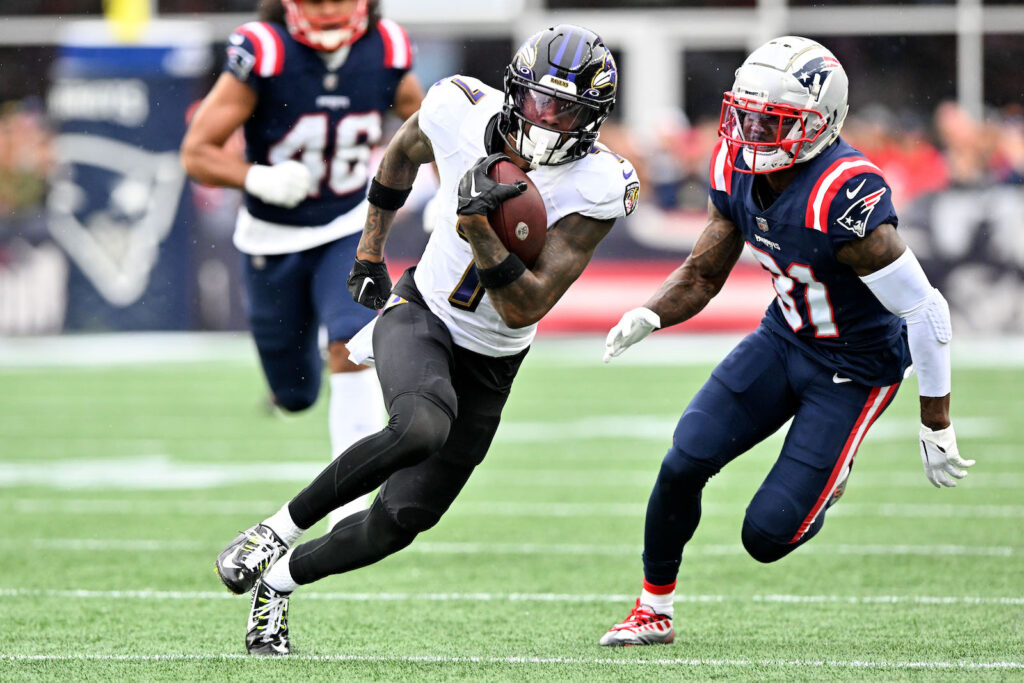
Rashod Bateman, 24, was the Baltimore Ravens’ first-round pick in 2021, but he has not flourished in his first three seasons. He has only four career touchdown receptions, and last season he had 32 catches for 367 yards (ranking sixth on the team in those categories) and one touchdown.
Baltimore's first-round pick last year, Zay Flowers, is clearly the team’s top wide receiver. Pro Bowl TE Mark Andrews is also targeted much more than Bateman, who has had issues with drops. He missed 12 games in 2022 due to a foot injury.
It's unlikely the Ravens will exercise Bateman's fifth-year option. A draft weekend trade that brings a mid-round pick from a team that valued Bateman highly back in his draft year is best for both the team and the player.
That would give Bateman the fresh start he needs, and Baltimore would get a pick now rather than losing him next March. The Ravens can also replace Bateman with one of their early-round picks from a strong receiver class and save $2.35 million on this year’s cap; Baltimore could use the room because it only has $9.1 million available.
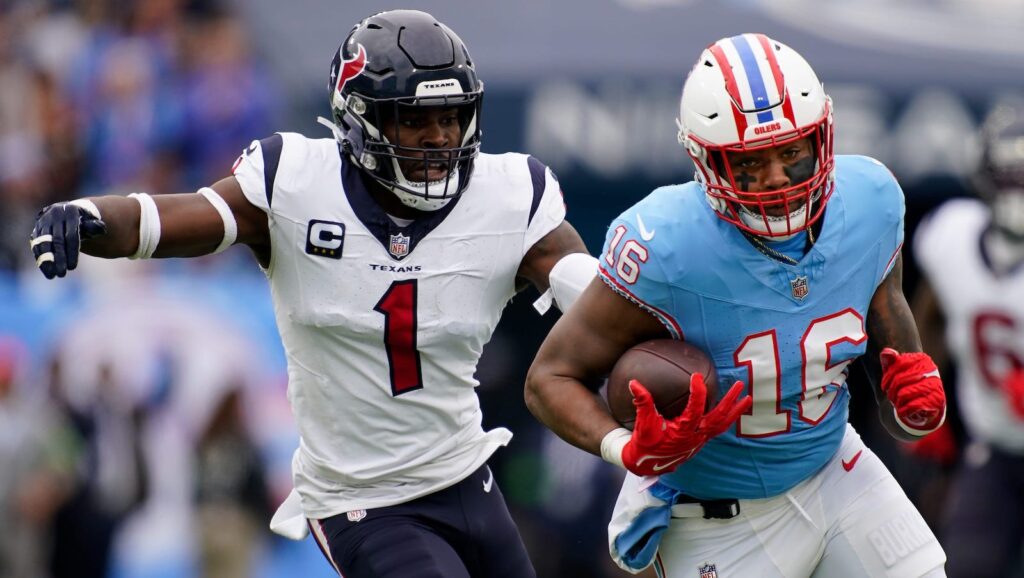
Like Bateman, Treylon Burks is an underachieving first-round wide receiver. However, he was drafted more recently (2022) by the Tennessee Titans. He’s had difficulty staying healthy, missing 13 games in his first two seasons.
Burks, 24, had only 16 catches for 221 yards and no touchdowns last season. The presence of Calvin Ridley, DeAndre Hopkins and Nick Westbrook-Ikhine means Tennessee should trade Burks if it can get a reasonable offer from a team that rated him highly entering the 2022 draft.
The Titans would have to absorb an additional cap hit of $4.6 million by trading Burks, but the team has $31.7 million of cap room, so it can afford it. The Titans would then save $2 million in salary and roster bonuses on a player who has not been a good fit.
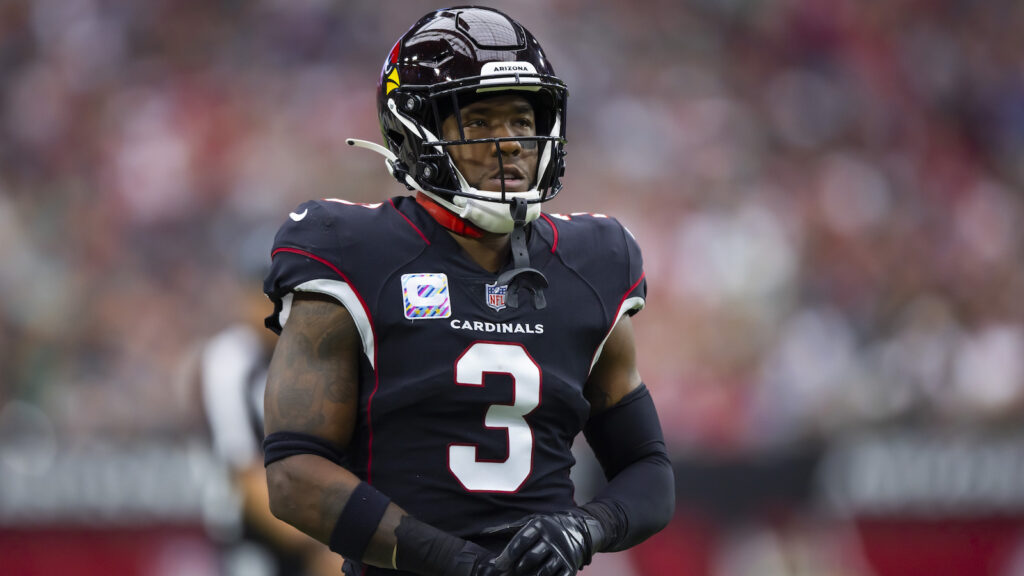
Budda Baker has been a contract headache for the Arizona Cardinals during the past several years. After signing a four-year, $59 million extension in 2020, he became dissatisfied and sought another extension. He was unsuccessful in that pursuit and requested a trade last offseason before agreeing to a revised contract with a pay raise for 2023 and 2024.
Baker has four seasons with 100-plus tackles and had 87 tackles in 12 games last season. He made his sixth Pro Bowl despite spending five games on injured reserve because of a hamstring injury. He has seven career interceptions but is still without a long-term deal and is headed to free agency next March.
The Cardinals can pick up $15.1 million in cap space by trading their 2017 second-round pick, but they have $29.7 million of room, so that shouldn’t be a big motivating factor. This should be more about trading a player who is still productive when healthy, has value with age not being a big issue (he's 28) and is likely to depart when he hits free agency.
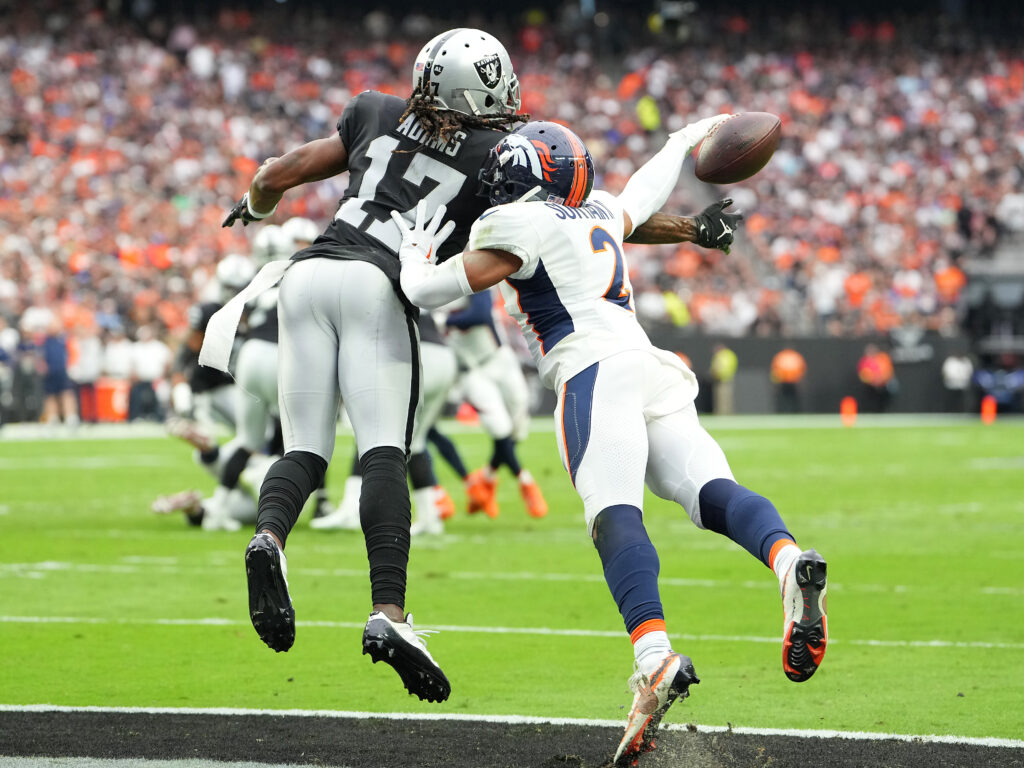
While on the surface, it seems unlikely the Denver Broncos would trade Patrick Surtain II, a 24-year-old two-time Pro Bowler and 2022 first-team All-Pro, quarterback-needy teams often make drastic moves.
Jarrett Stidham is penciled in as the team's starter, so Denver should trade Surtain as part of a move-up to a top-four draft pick and select a quarterback from this talented class; Payton said it’s “realistic” for the team to trade up to draft a quarterback.
Surtain was the Broncos’ first-round pick in 2021. He has seven interceptions, 36 passes defended and 187 tackles in his three-year career.
The Broncos are facing cap challenges due to Russell Wilson’s massive dead money hit after being traded. Surtain’s $6.67 million cap hit this year will remain whether he’s traded or not due to dead money if he’s moved. The cap benefit will come in 2025 when Surtain would have a projected $19.8 million fifth-year option that would be eliminated.
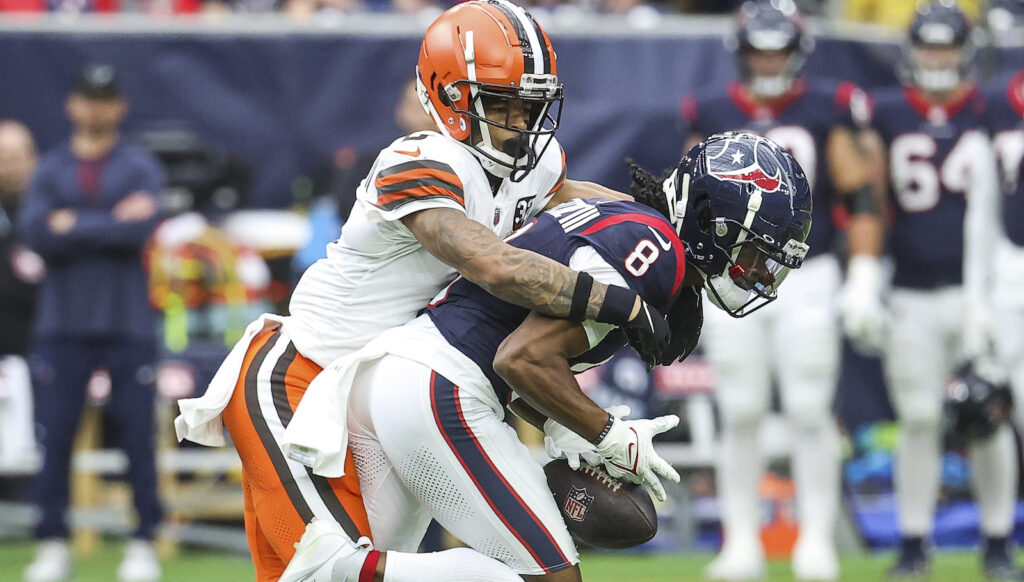
Greg Newsome II, 23, was the Cleveland Browns’ first-round pick in 2021. He’s a quality cornerback at a position of strength for the team. The Browns have Pro Bowler Denzel Ward and 2022 third-rounder Martin Emerson as fine corners and should trade Newsome during this draft for an early-round pick.
The Browns are projected to be $52 million over the cap in 2025, per Spotrac. Newsome’s $4.1 million cap hit this year will remain whether he’s traded or not due to dead money. But Cleveland can save a projected $13.38 million on a fifth-year option for Newsome.
Newsome has only two career interceptions, but he has 29 passes defensed. He’s missed 10 games due to injuries in the past three years. Now is the time to trade a player with value before he becomes too costly.
NFL Analysis
4/17/24
5 min read
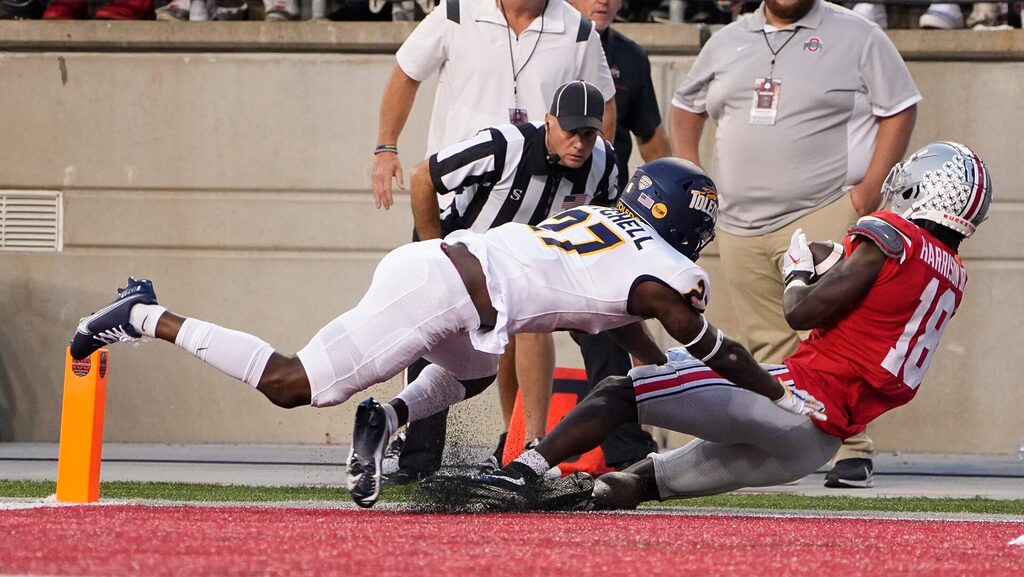
Sure, man-to-man shutdown corners are flashy, but you have to be effective in zone coverage to make it in the modern NFL. After all, most teams play zone more than half the time. The best zone corners pair athleticism with great processing, monitoring the quarterback and reading receivers’ every move.
We’ll use our evaluations and metrics to rank the top seven zone cornerbacks in the 2024 NFL Draft Class.
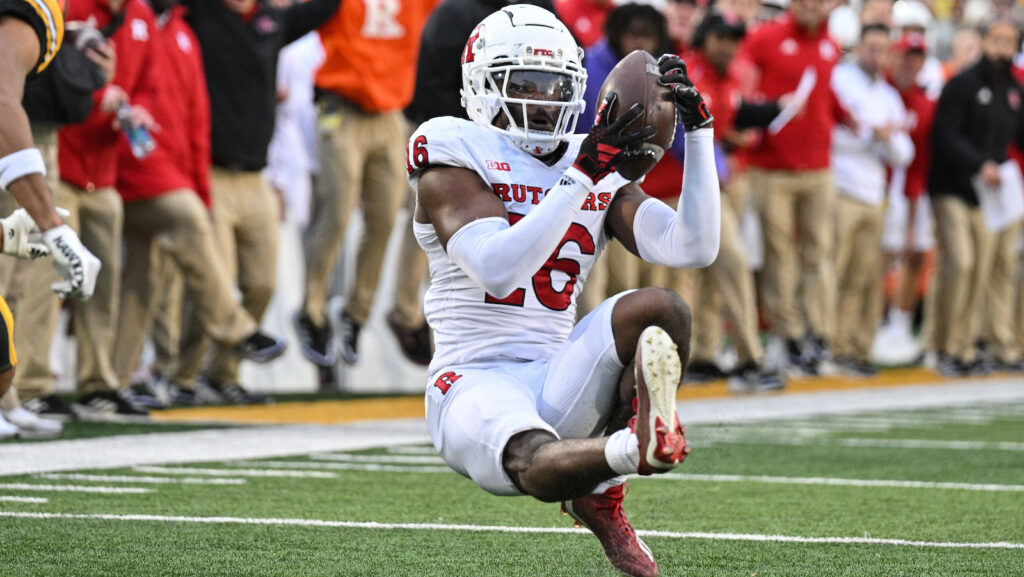
While his man coverage ability is just sufficient, Max Melton’s football intelligence and awareness make him a strong zone defender. As Evan Sharkey wrote in his scouting report, “He has solid eye discipline and is able to read and react to the quarterback while being mindful of the action around him.”
Melton did a great job clamping down in zone in 2023, averaging the third-best yards per zone coverage snap among this year’s prospects. He wasn’t quite so elite if the focus was just on his targets, but if you don’t get targeted you can’t get beat.
>>READ: Ranking the Top 15 Cornerbacks in 2024 NFL Draft
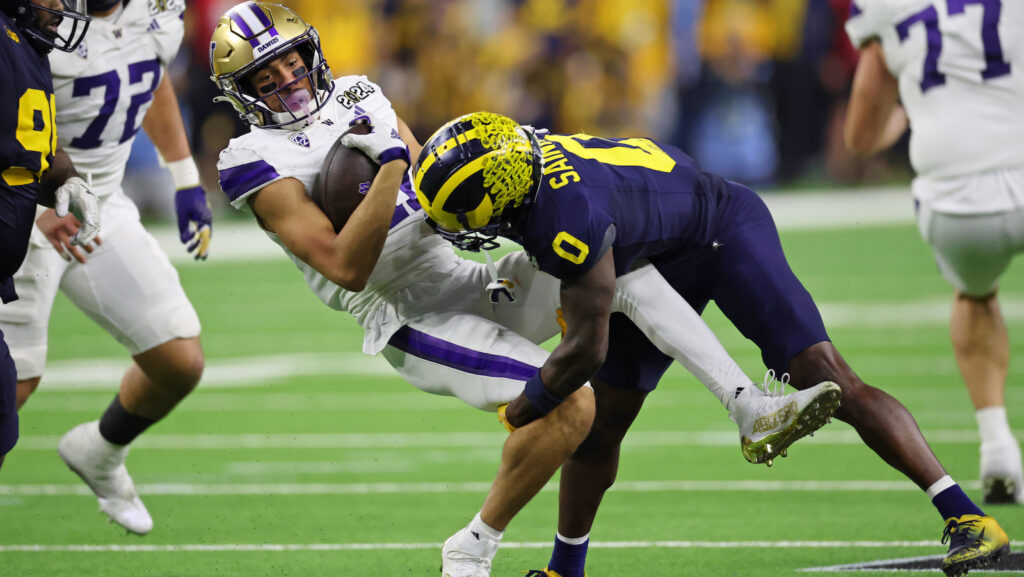
Mike Sainristil is just 5-foot-9 and doesn’t have the physicality to play up on the line, but he had solid jump numbers at the NFL Combine and brings “great movement skills, twitch, and hip fluidity,” per Jeremy Percy’s scouting report.
To that point, we graded him as a “7” (very good) in reactive athleticism and transition ability.
He split time at receiver while at Michigan, so while his size and experience limitations bring down his overall stock. He makes up for that with ball skills and an awareness of what the receiver wants to do.
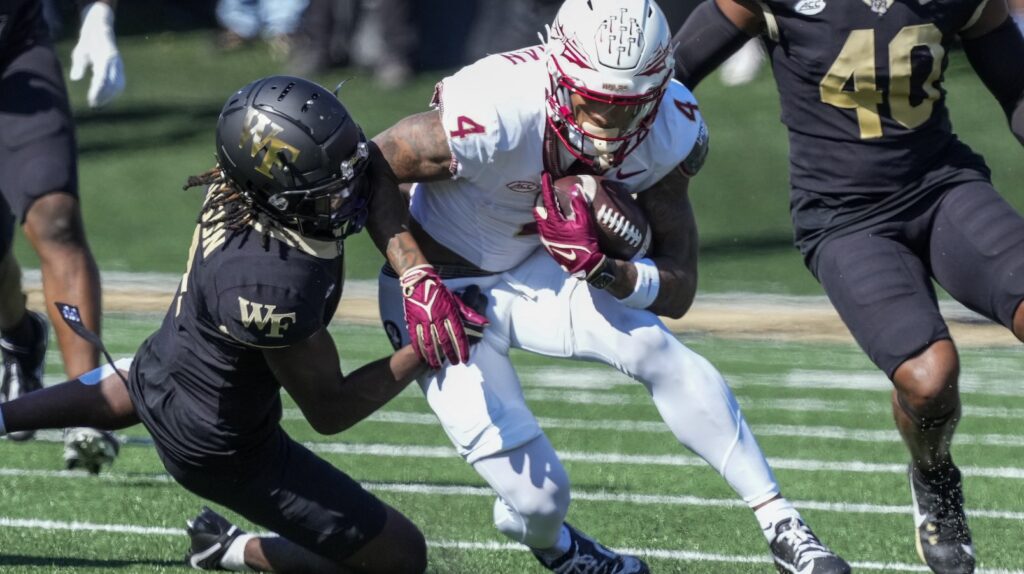
Scout John Lininger described Caelen Carson as “one of the better athletes on the field no matter the opponent” while at Wake Forest, but his technique suggests a lack of trust in that athleticism.
Per Lininger’s scouting report, “Carson moves very well and has solid hip fluidity, and when he plays proper positioning and trusts himself, good things happen.”
In one of the position’s odder career trajectories, Carson had his best years earlier in his career. He started with a Pass Coverage Total Points Rating of 99 (best possible) in his first year, and that declined each year to 85 this past season. The same could be said of his performance when targeted in zone coverage, where he lagged in 2023 but would have been among the best at the position with his 2020 stats.
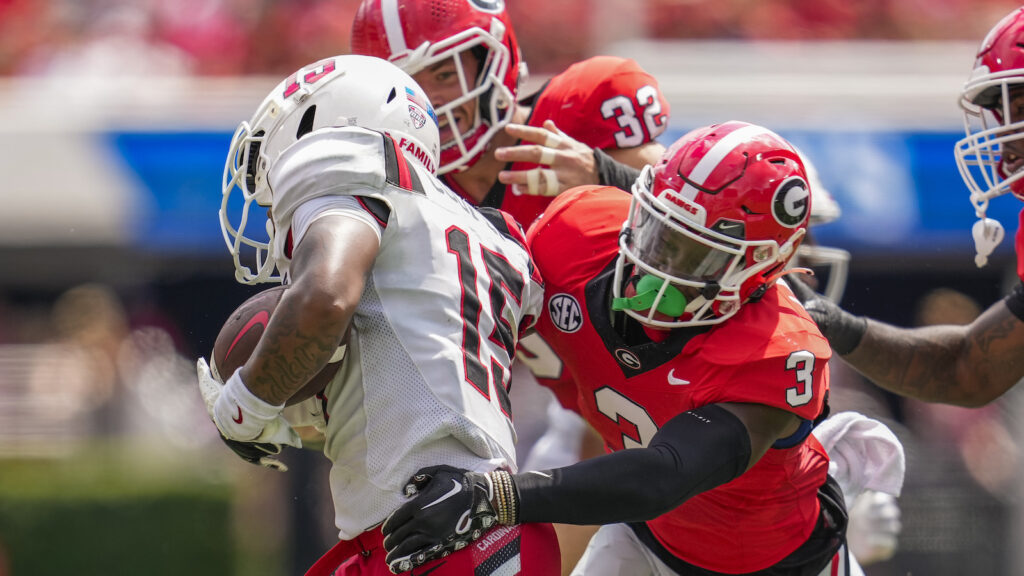
In a shocking turn of events, a Georgia defender is on the list.
In 2023, Kamari Lassiter allowed the fewest yards per coverage snap of anyone in the class and ranked merely third in zone.
SIS’s No. 7 cornerback overall, Lassiter showed good transition ability, “[doing] a good job of getting depth in his drops and keeping everything in front.”
In his scouting report, Max Nuscher compliments Lassiter’s ability to read route concepts but acknowledges he can lose his assignment if receivers get behind him.
Nate Wiggins is SIS’s No. 2 cornerback, with the same grade as Alabama’s Kool-Aid McKinstry. He actually grades out better in man coverage than in zone, but that’s why he’s ranked better overall than he is on this list.
In his scouting report, Nathan Cooper points out the value of Wiggins’ ability to process what’s in front of him: “In zone coverage, he has the awareness to see what’s going on around him and the football intelligence to read and recognize route combinations to jump routes.”
It’s hard to argue with his production in zone in his final season at Clemson: second in yards allowed per zone coverage snap and third in the percentage of zone targets with a positive EPA allowed.
Up to this point, everyone on this list has been graded with a “6” (good) in zone coverage.
Cooper DeJean is our first “7,” with the same grade for his football intelligence. He improved quite a bit in his final season at Iowa, spending more time on the outside and being given more press responsibilities.
From Nathan Cooper’s scouting report: “DeJean is at his best in zone coverage. He uses a zone turn to the field to see everything that’s going on. He’s incredibly cerebral, reading the quarterback’s eyes and route concepts and falling off routes to jump others with an uncanny ability.”
Our No. 3 overall cornerback takes top billing on this list, in part because his biggest hangup as a prospect is his ability to support the run. Quinyon Mitchell also grades as a “7” in zone with good closing speed and a cerebral approach to the position, per Jeremy Percy’s scouting report.
While he wasn’t a true shutdown corner at Toledo, Mitchell clamped down when the ball came his way and improved dramatically in this respect during his career. In terms of Positive Play Percentage allowed in zone coverage, he went from 41 percent in 2021 to 34 percent in 2022 and 24 percent in 2023.
All stats and ranks are as of 4/16/24.
This article was written by Alex Vigderman
NFL Analysis
4/17/24
6 min read
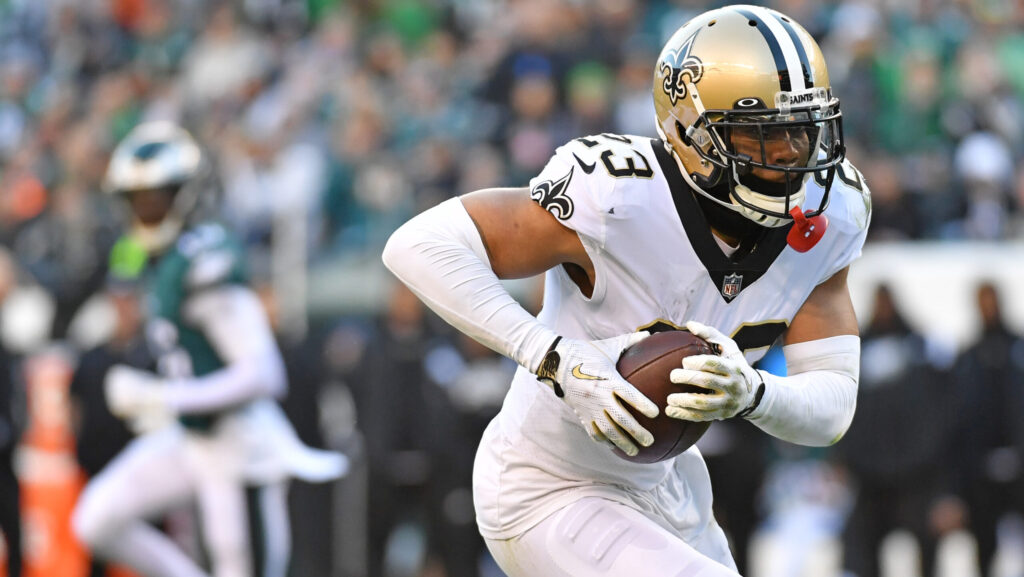
The initial big waves of free agency have passed. The 2024 NFL Draft is just more than a week away so remaining available veteran players isn't the league's focus. But smart teams are always keeping an eye on veterans who are still available after the draft.
It's when a team like the Baltimore Ravens strikes and finds value in undervalued veterans. Current free agents aren’t the only players who could be available. The draft and other team-building avenues open up more chances for players to hit the open market.
With that in mind, let’s look at a few names that could be available after the draft and into the summer.
The New York Jets are one of four teams with negative effective salary cap space, per Over The Cap. That means they need to move some salary to sign their draft class.
According to OTC’s figures, they need to clear about $2.8 million. A small contract restructure could easily accomplish that, but it would also keep them close to the cap and potentially in a bind throughout the season.
John Franklin-Myers' base salary is $13.3 million for 2024, but just $3.2 million is guaranteed. After a trade for Haason Reddick, Franklin-Myers could see his playing time decrease on a line with Jermaine Johnson and Will McDonald, first-round picks from the past two drafts.
By quality of play, Franklin-Myers should not be the odd man out in that rotation, but moving on could be the easiest way for the Jets to shed some salary. He’d be off the books for 2024 and 2025 with $4 million saved in 2024 cap space with a release. The Jets could also field a trade, opening up $7.3 million in cap space with some future draft capital in return.
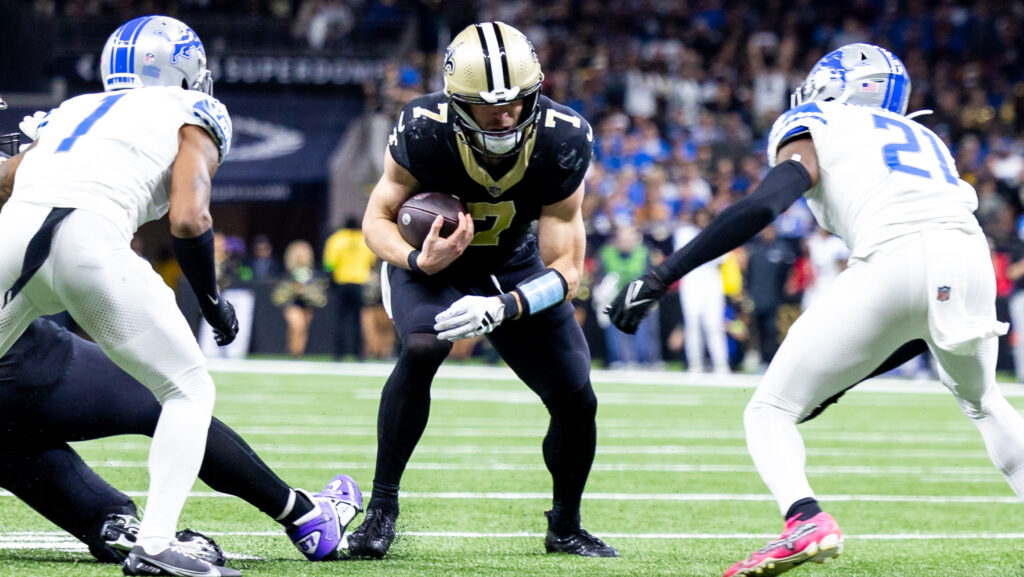
The New Orleans Saints are always in a strange financial situation.
The Saints are serial restructurers, opening up cap space by pushing money into the future. That’s a fine way to work the accounting rules, but it can become dicey when players age and there is no way to get out of the contract.
That changes on June 1, when dead money can be split across two seasons. Releases can be designated as post-June 1 transactions at any point in the offseason while the cap ramifications go into effect on June 1.
That is not the case for trades, which actually must be completed after June 1 to qualify for that cap benefit.
Trades also benefit from transferring the full salary, so just the bonuses are accounted for on the cap. If the Saints wanted to start moving away from the hamster wheel they’ve been running on some post-June 1 trades could be appealing.
The first would be for CB Marshon Lattimore. Lattimore’s name has been in trade rumors, but the only transaction that would open up cap space for the Saints is a post-June 1 trade.
New Orleans would free up about $3 million on the 2024 cap and get out of his contract’s final three years, which comes with salaries of $16 million in 2025 and 2026. Lattimore would count for a $20.6 million dead money hit in 2025, but that would be well below the $31.4 million scheduled cap hit if he remained on the roster.
A new team would be on the hook for about three years and $38 million, with just $12 million guaranteed in 2024. That’s about where Chidobe Awuzie signed with the Tennessee Titans this offseason. Lattimore has played inconsistently, but that’s a reasonably low-risk swing for a team with a need at cornerback.
A Taysom Hill trade could save the Saints $10 million in cap space after June 1 and save New Orleans from $10 million salaries in 2024 and 2025. Hill is probably a trade candidate for only one team — the Denver Broncos — but it’s possible.
Let’s say the Broncos don’t come away from this draft with a quarterback. Would anyone be shocked if Sean Payton sent a late-round pick to the Saints for Hill to get some Wildcat and red zone snaps out of him, if not outright compete with Jarrett Stidham for the starting job?
These are two easy ways for the Saints to shed future salary, preventing them from the inevitable restructure of these contracts next offseason.
Alvin Kamara also fits in this category. The Saints could have saved money by designating him a post-June 1 release this offseason but didn't, hinting he’ll be on the roster and part of the Saints’ plans this season.
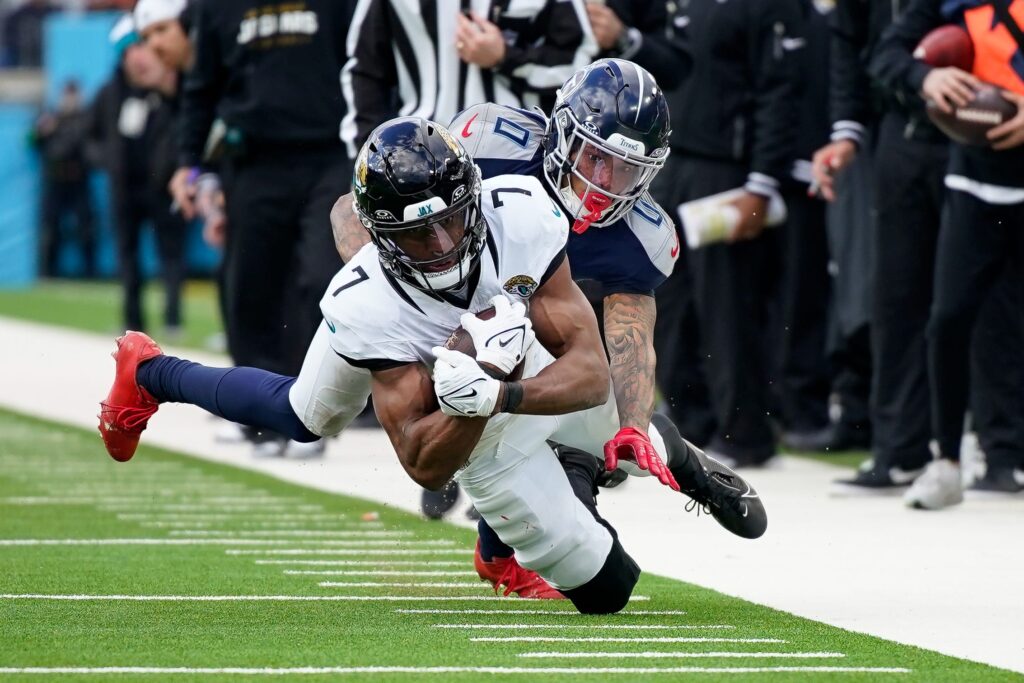
Zay Jones and Darius Slayton could be on the outside looking in should their teams draft a wide receiver early. The Jacksonville Jaguars and New York Giants are expected to be interested in first-round receivers.
Jones has been a useful third receiver. Still, with Christian Kirk and Gabe Davis on the roster and a potential rookie coming in, Jones’s $7 million salary would be a lot for a fourth receiver, especially at 29 years old. Jacksonville would save $4 million with a release.
After 82 receptions and 823 yards in 2022, Jones battled through injuries in 2023 and played in only nine games, totaling 34 receptions for 321 yards and just over a yard per route run.
Slayton has seemingly been in this position every year with the Giants. Yet, the former fifth-round pick continues to find himself in a key role. His playing time has increased in each of the past three seasons.
He’s had at least 700 receiving yards in four of his five seasons. In 2023, Slayton remained relatively productive on the outside, while the Giants stacked the roster with slot receivers and went through a carousel of quarterbacks.
The Giants are another team that will need to open up cap space to sign its draft class. Moving on from Slayton would open up $3.8 million in cap space for a release or trade before June 1 or $6.4 million after.
The 27-year-old could have value for a team needing a secondary deep threat on the outside.
NFL Analysis
4/17/24
12 min read
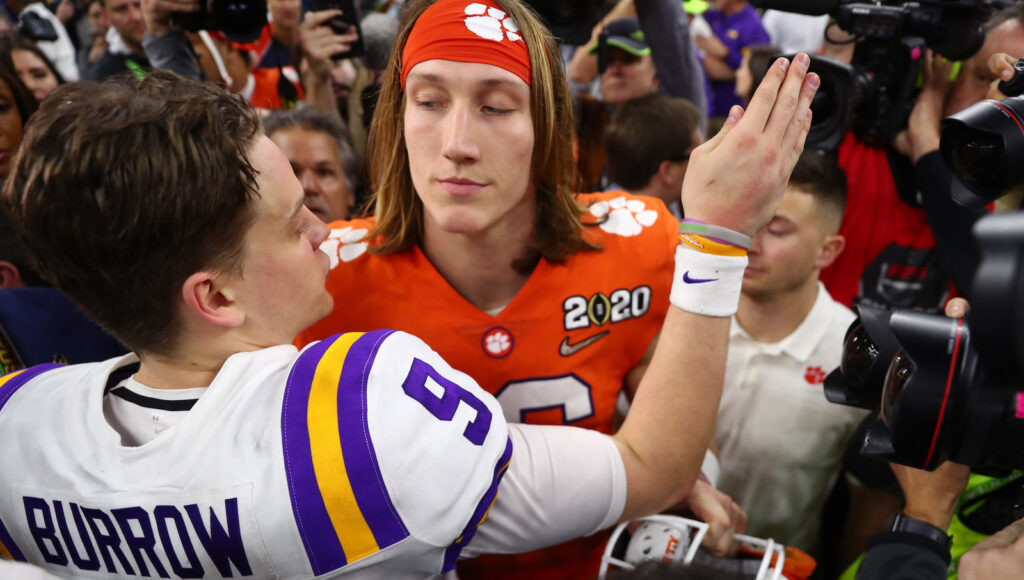
The 2024 quarterback class looks as strong as we've seen in several years due to the depth of talent available.
The sextet of Caleb Williams, Jayden Daniels, Drake Maye, J.J. McCarthy, Bo Nix and Michael Penix Jr. have earned their flowers with stellar play at the collegiate level. But where would these top quarterbacks rank compared to the first-round passers in the past five classes?
I've created an integrated listing of the 18 first-round quarterback prospects since 2020, using my own grades and actual draft position. Some players haven't quite worked out as well as the league and I hoped, but that's the risk the NFL draft brings. There's rarely a sure thing.
From best to worst, here's how the 2024 NFL Draft's top six quarterback prospects stack up to the most recent draft classes since 2020.
Coming off the greatest passing season college football had seen, Joe Burrow was as close to a slam dunk as we've seen in years. The explosive downfield passer completed 76.3 percent of his passes for 5,671 yards and 60 touchdowns in his final season at LSU, leading his squad to a 15-0 mark and a national title.
Transfers are more normal now than they were then, and Burrow has become close to a poster child for how well the portal works.
Concerns about Burrow's average arm strength, mobility and late breakout were mitigated by his rare accuracy and confidence. Everything clicked into place for him in 2019, giving the Cincinnati Bengals an easy decision at No. 1 overall in a good quarterback class.
Burrow was far from just a product of having Justin Jefferson and Ja'Marr Chase, and he has quickly become one of the NFL's top quarterbacks.
From a superstar recruit to a golden prospect, Trevor Lawrence was destined to be the top overall pick before he even stepped on the field at Clemson.
The 6-foot-6, 220-pounder accomplished about as much as anyone could in his three years with the Tigers, and the Jacksonville Jaguars are seeing good results thus far. The question for Lawrence is whether he can leap from being a solid player to a great one.
The tools are certainly there, and Lawrence was the lynchpin of Clemson's success. He was strong-armed, athletic, and had a big frame. Lawrence checked all the boxes teams wanted to see.
Our first 2024 NFL Draft prospect lands at No. 3.
Caleb Williams isn't far behind Lawrence but is comfortably ahead of the next best from this timeframe. Though only 6 feet tall, Williams' explosiveness as a passer inside and outside the pocket is better than anyone else on this list. Even as a freshman, he was a dominant force and continued to carry his teams through this past season.
Williams must find the balance between being a big-game hunter and a game manager at the next level. He had a few too many instances of getting greedy for downfield plays instead of taking what defenses were giving him, but it's also a byproduct of playing for a team that couldn't help him with stops.
>>READ: Latest 2024 Mock Draft
It's not just hindsight to say C.J. Stroud was this strong of a prospect. Every prospect has flaws, but Stroud's were molehills compared to many of his peers.
The biggest question mark about Stroud's game had nothing to do with physical traits or football IQ but rather whether he could be the playmaker teams need to create something out of nothing in key moments.
He answered that question in his final college start against Georgia. Stroud played less robotic in that battle, laying it all on the line when it mattered most. His rookie season in Houston reflected his immense ceiling and quieted concerns about whether he was a product of a terrific situation at Ohio State.
Our first "bust" of the group might just be Justin Fields. Fields was phenomenal in two years at Ohio State and might've won a national title if not for a rib injury against Lawrence's Clemson squad in 2020. Fields was always the biggest, fastest, most gifted player on the field. That had some analysts ranking him as highly or above Lawrence.
Unfortunately, Fields' processing hasn't caught up to his athleticism just yet. The Chicago Bears failed Fields as much as anything, so a fresh start in Pittsburgh might still reveal a franchise quarterback.
>> READ: Fields Is a Perfect Fit for Steelers
On paper, Justin Herbert had everything to be an elite quarterback prospect. The 6-foot-6, 235-pounder came from a traditional NFL offense that required him to be under center, turn his back to the defense, reset his eyes and make contested throws.
However, Herbert's career at Oregon seemingly regressed from 2017 to 2019 despite his numbers improving as his role and playmaking diminished in the scheme.
It turned out Herbert is a more natural player than what the Ducks’ offense showcased in 2018 and 2019. Though he's still prone to checking down too often, Herbert has exceeded expectations since being taken after Tua Tagovailoa.
The man drafted one spot ahead of Herbert has done himself justice thus far in the NFL. Tua Tagovailoa has clear limitations as a passer, lacking his peers' top-end size, arm strength and athleticism, but what made him great at Alabama has finally been on display the past two seasons.
He's hard to compare against because he's not the freakish physical talent most others on this list are.
There are plenty of reasons Nick Saban turned to Tagovailoa over Jalen Hurts in the waning moments of the 2018 National Championship Game. His poise, intangibles, incredible accuracy, quick release and anticipation are about as good as it gets. If you gave him Herbert's size and arm strength, he'd be the generational prospect everyone always hopes to find.
Turning 22 this August with only two years of starting experience, it's important to remember that Drake Maye is still on the younger side of age and playing time.
That said, the criticism he's faced this offseason is surprising. Sure, the 6-foot-4, 223-pounder had slightly worse stats this year, but his supporting cast underwent major changes from 2022.
Maye effectively balances chasing big plays and nickel and diming defenses down the field. He's prone to a few head-scratching blunders, but so were Herbert, Patrick Mahomes and Josh Allen.
Maye doesn't quite have the arm strength of those players, but his ability to layer passes to all three levels is nevertheless terrific.
The ranking difference between Maye and Jayden Daniels likely comes down to preference.
Maye is 1.5 years younger and much stouter than Daniels, but the latter is coming off an incredible Heisman Trophy-winning campaign. Both could be extraordinarily successful in the right situation.
Daniels' downfield passing prowess, comfort outside of the pocket, improvement from Year 1 to now and rushing ability help make him special. His arm talent is good but not great, and he'll have to become more anticipatory as a passer. But his trajectory is promising, and he could produce enough big plays to overcome the typical struggles young players face.
Anthony Richardson was a hotly debated prospect because many evaluators were hung up on a 54.7 percent career completion rate and limited experience.
The 6-foot-4, 244-pounder had all the tools to be the best player on the field on any given Sunday, though. Surviving the hiccups could pay off, as Allen did. Unfortunately, due to injuries, we only saw Richardson in parts of four games in 2023.
Between his arm strength, advanced pocket management and terrific rushing acumen, Richardson was a prototypical developmental QB prospect. He's risky, but he has everything needed to become an All-Pro candidate, which is more than anyone lower on this list has.
The rise of J.J. McCarthy has surprised many in the online scouting community after he was mostly along for the Wolverines' championship ride in 2023.
Strong-armed, athletic, charismatic and experienced under center, McCarthy checks many boxes scouts and coaches look for. He possesses a strong arm and the ability to move the chains with great efficiency on third down.
The rest of his game is a question mark, though. Can he handle being the driver of an offense? Will his accuracy be more consistent at the next level, or is he just naturally a scattershot power thrower?
Those questions will determine his floor and upside, which is a scary proposition for interested teams.
I promise this isn't an overcorrection based on Bryce Young's rookie season. Despite the impressive collegiate production and highlight reel, I wasn't high on him.
Young's issues ranged from pre-snap defensive identifications to middling arm strength and late passing attempts.
Those problems were exacerbated by a terrible surrounding cast in Carolina last season. Young should improve as his situation does, and his playmaking outside of structure pushes him above his peers despite the bad start to his career.
The curious case of Bo Nix will be a fascinating plot to watch unfold in the NFL. He was essentially two extremes in college.
At Auburn, he showed tremendous athleticism and arm talent but also a penchant for getting wildly out of control with his decision-making and accuracy.
That all changed at Oregon. He became a system quarterback who only had a few opportunities every couple of weeks to be a playmaker. His efficiency soared through the roof, and he responded well in head-to-head matchups against Michael Penix Jr.
Still, there's an air of uncertainty about what Nix is. His accuracy and poise under pressure will define how successful he'll be.
Few players in college football history have a journey as unique as Michael Penix Jr. He began his career at Indiana in great fashion, showing off a huge arm and ability to create big plays. However, several injuries and dips in play led him to Washington, where he transformed his identity.
Supremely explosive as a passer for the Huskies, Penix flashes excellent timing and ball placement on deep attempts. But he's not mobile, his short and intermediate placement is unpredictable and he struggles with velocity while under pressure.
He'll need a great surrounding cast to be a long-term, above-average starter in the NFL.
The most uncommon first-round quarterback prospect within this span has to be Jordan Love. He was taken later than anyone else on this list, 26th overall, and given three years to develop. His breakout season in 2023 seemingly unearthed a star, but Love needed more work than most of his peers.
His sophomore tape at Utah State was quite promising, but his final year was rough. He struggled after a coaching change and the loss of talent around him. Always a gifted athlete with a strong arm and the knack for jaw-dropping bucket throws, Love overhauled his mechanics in order to greatly improve with the Green Bay Packers.
This is the part of the list where it's hard to justify what teams were even thinking with these prospects.
Although Zach Wilson had the physical tools to wow scouts in practices, his breakout 2020 season at BYU was against a tremendously weak level of competition, and his film in previous years was uninspiring.
And yet, the New York Jets seemingly locked into Wilson as soon as they landed the No. 2 pick. They overlooked a young, immature player who lacked experience against higher-end athletes and complex coverages.
Wilson needed to be eased into a job with great protection and playmakers to succeed, and that was always the case.
The idea of what Trey Lance could be made sense.
Standing 6-foot-4 and 226 pounds with a strong arm and running like a gazelle in the open field, he was physically like a Madden-created player before freakier guys like Richardson came along. Still, Lance played in only 19 games at North Dakota State in a highly conservative offense.
Injuries and a steep learning curve put Lance behind the eight-ball in the NFL. His accuracy issues have been a hot topic in practices, leading to an overhaul of his passing motion. He's not played enough to truly know what he is, but at least the San Francisco 49ers were dreaming big when they made their massive trade for him.
Following Tagovailoa's footsteps at Alabama, Mac Jones led an absurdly good offense in 2020. The Crimson Tide were unstoppable, and Jones' pocket-passing prowess was on full display with stars around him.
Despite clear athletic limitations, having only one full season as the starter, and New England lacking a decent set of playmakers to ease him in, the Patriots took Jones 15th overall.
Since then, Jones' confidence has been shattered amidst a chaotic run under Bill Belichick. Maybe Jones could've thrived if he had landed in San Francisco instead of Lance. However, things went as poorly as they could, and Jones never could overcome less-than-ideal circumstances.
At least every other first-round quarterback in the last five classes had a pathway to becoming a franchise passer. That's not the case for Kenny Pickett, who headlined one of the worst quarterback classes of the past decade. Everyone seemingly knew how limited the group was, yet the Steelers spent the 20th overall pick on the sixth-year senior.
Pickett's 2021 numbers were excellent, but he struggled with basic pre-snap reads and loved to hold onto the ball and extend plays to his right. He lacked a plus arm, and his accuracy was only decent. It's not a surprise Pittsburgh quickly jettisoned him after two poor seasons.
Analysis
4/17/24
1 min read
Sean Payton and the Denver Broncos trading into the top 3 for a franchise QB is one of several NFL Draft scenarios Sam Monson & Steve Palazzolo would like to see come true.
Analysis
4/16/24
1 min read
While others are projected to be drafted higher, Sam Monson believes UCLA's Laiatu Latu is the best defender in the 2024 NFL Draft. Steve Palazzolo agrees, but thinks Toledo CB Quinyon Mitchell should also be considered near the top of the list.
NFL Analysis
4/16/24
1 min read
Insider Ari Meirov gives four players who are getting more hype from teams than what we have seen in the media/on mock drafts.
NFL Analysis
4/16/24
1 min read
Insider Ari Meirov explains that if a team wants J.J. McCarthy, like the Minnesota Vikings, the Tennessee Titans could be the path to getting their QB of the future.
NFL Analysis
4/16/24
1 min read
Insider Ari Meirov explains why Washington QB Michael Penix Jr. could be selected in the first round of the 2024 NFL Draft and the four teams that could consider making him their heir-apparent at quarterback.